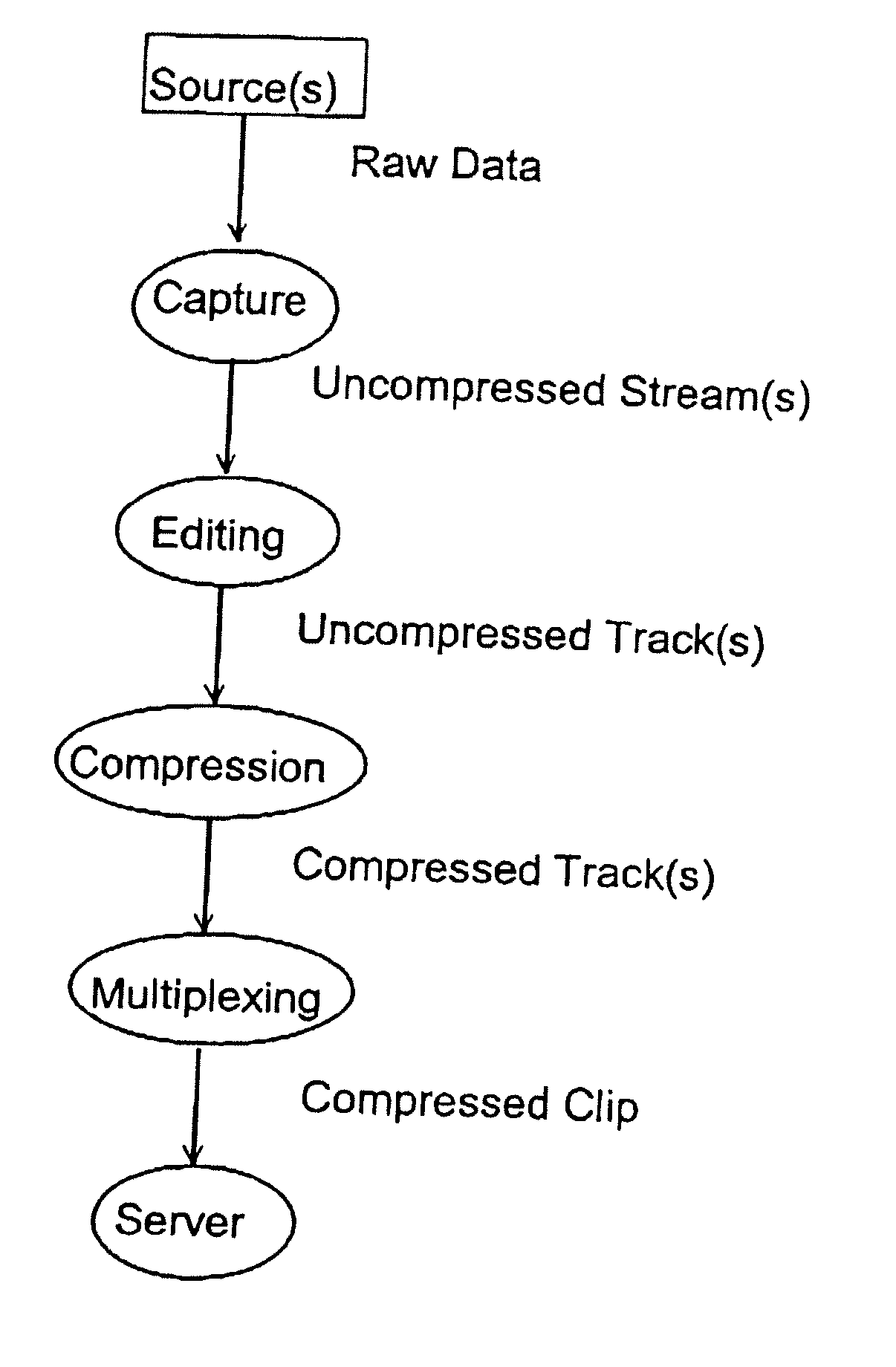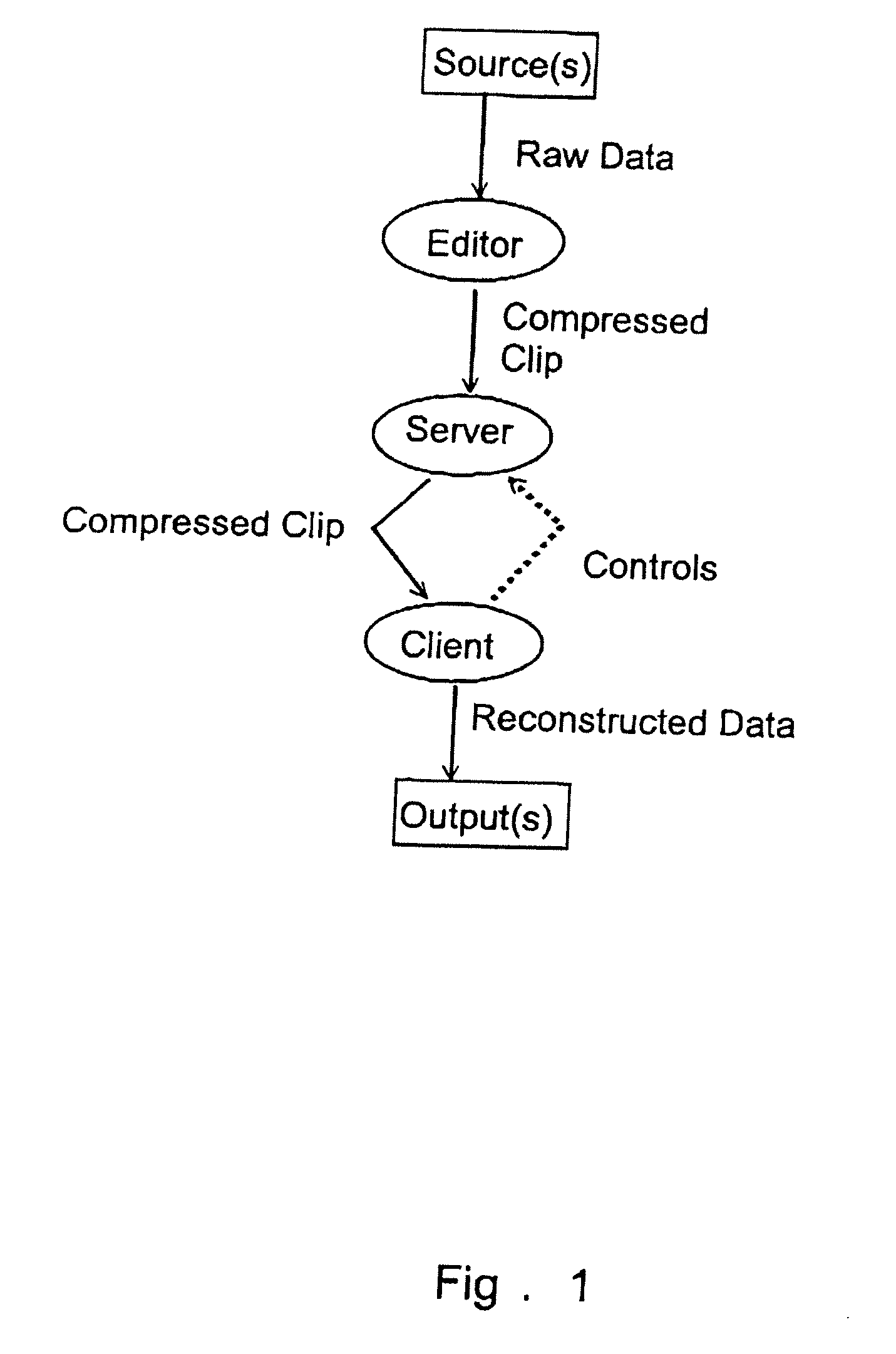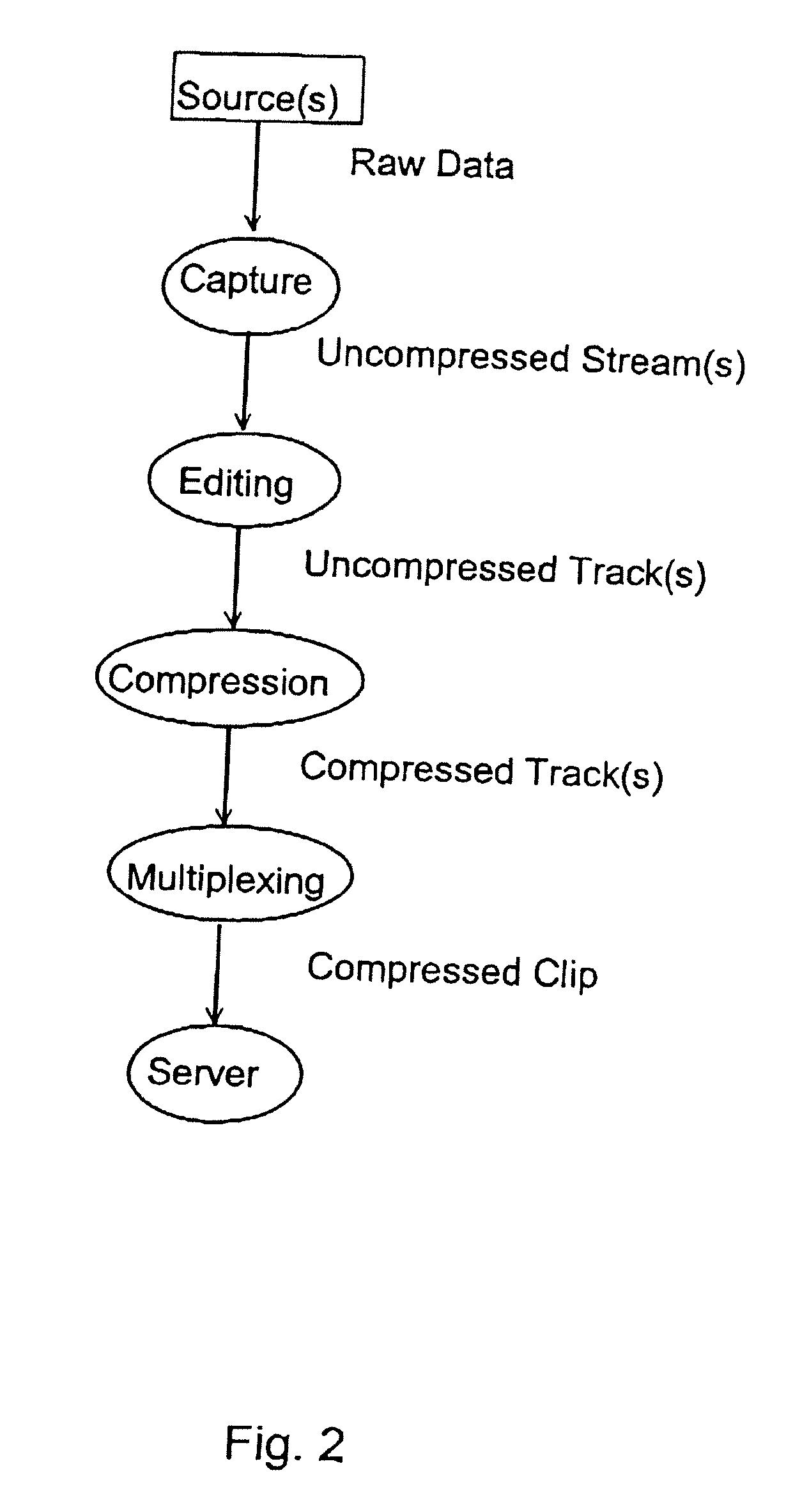Data transmission
a data transmission and data technology, applied in the field of data transmission, can solve the problems of affecting the quality of reconstructed clips, the gateway may occasionally have to discard datagrams, and the degradation of ip datagrams, so as to reduce the occurrence of pauses, reduce transmission throughput, and increase safety times
- Summary
- Abstract
- Description
- Claims
- Application Information
AI Technical Summary
Benefits of technology
Problems solved by technology
Method used
Image
Examples
example
[0102] An embodiment of the invention was tested using an H.263 compliant encoder and a frame re-ordering tool. The encoder was capable of producing B-frames. The re-ordering tool comprised a re-ordering algorithm and could be adjusted to produce frame ordering for different decreased channel data rates.
[0103] A standard ITU-T test sequence of video frames called Glasgow was used. The sequence had a QCIF resolution, that is a luminance picture size of 176×144 pixels and a chrominance picture size of 88×72 pixels.
[0104] The first 297 frames of the Glasgow sequence were compressed to produce a temporally scalable bitstream comprising INTRA (I) frames, INTER (P) frames and bi-directionally predicted (B) frames. The I and P frames are referred to as primary frames and the B frames are referred to as secondary frames. The frame rate of the original (default) sequence was 12.5 frames per second (fps) and so the compressed sequence corresponded to 23.68 seconds. Each frame was compressed...
PUM
 Login to View More
Login to View More Abstract
Description
Claims
Application Information
 Login to View More
Login to View More - R&D
- Intellectual Property
- Life Sciences
- Materials
- Tech Scout
- Unparalleled Data Quality
- Higher Quality Content
- 60% Fewer Hallucinations
Browse by: Latest US Patents, China's latest patents, Technical Efficacy Thesaurus, Application Domain, Technology Topic, Popular Technical Reports.
© 2025 PatSnap. All rights reserved.Legal|Privacy policy|Modern Slavery Act Transparency Statement|Sitemap|About US| Contact US: help@patsnap.com



